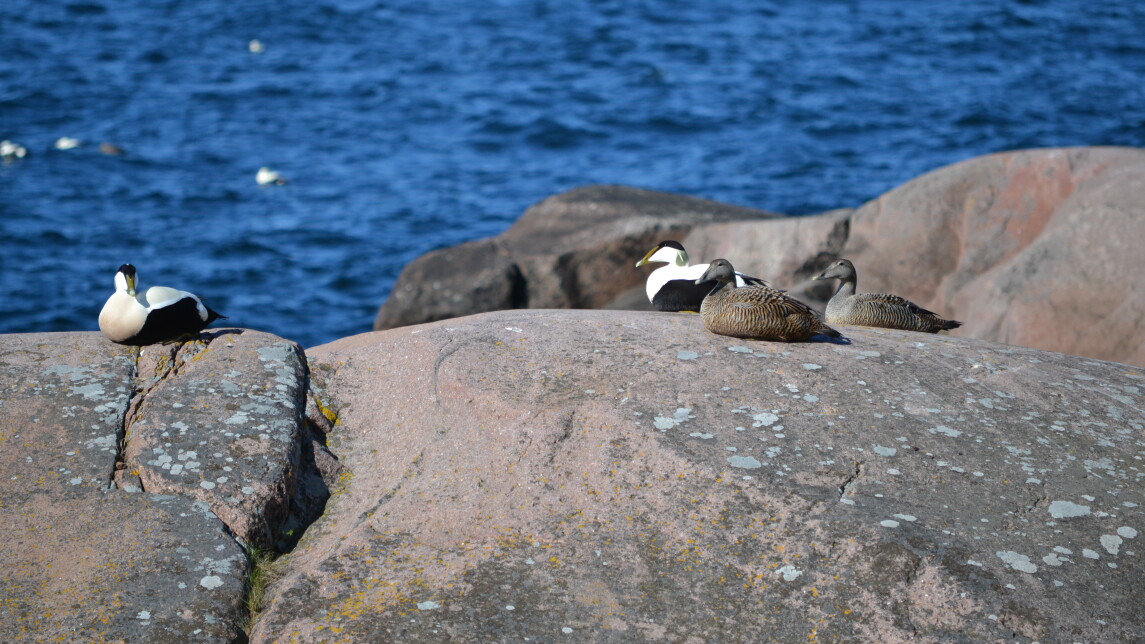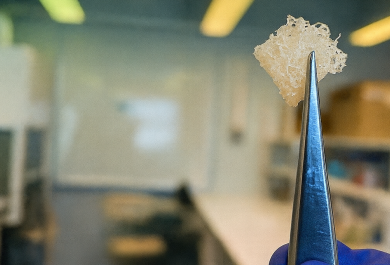A recent doctoral study highlights the widespread exposure of waterbirds to various synthetic chemicals in Finland.
Chemical pollution of the environment is a widespread issue with several examples of resultant harm to wildlife.
The number of commercially available chemicals has grown to a recent estimate of over 350,000 compounds or mixtures thereof. Thus, wildlife will not only continue being at risk of chemical exposure but the range of chemicals they are exposed to is also likely to expand.
A recent doctoral study examined the exposure of waterbirds to chemicals in Finland. The study focused on the common eider and the common goldeneye.
Among the 58 chemicals of emerging concern analyzed in common eider plasma and eggs, 21 were detected in at least one female and 17 in at least one egg.

A common eider nest with three eggs. Photo: Céline Arzel.
The most commonly detected compounds were bisphenol A (BPA), which is used in products such as food and beverage packaging and building materials, and benzophenone-3 and benzophenone-1, which are used as UV filters in cosmetics, plastics, coatings, and various industrial products. These chemicals enter aquatic environments through waste and stormwater, or emissions from industrial processes.
Additionally, the study found the presence of benzotriazoles and benzothiazoles in common eiders. These substances are produced in large volumes and are used in industrial applications such as corrosion inhibitors and lubricants, as well as in consumer products like vehicle materials, paints, plastics, textiles.
"So far, very little has been known about the presence of these different chemicals in wildlife, and even less is known about the potential long-term effects of chemical exposure on populations. We have now shown that many of the chemicals that end up in waterbodies also enter the bodies of waterfowl and are even found in their eggs," doctoral researcher Amalie Ask states.
Neonicotinoids are also widely found in aquatic environments globally, but until now, no published information has been available on their occurrence in waterfowl. The study investigated potential exposure of waterfowl to neonicotinoids by analyzing plasma samples from female common goldeneyes collected from across Finland. None of the targeted neonicotinoids were detected, suggesting that neonicotinoid exposure does not currently pose a significant risk to common goldeneyes in Finland.
“While the concentrations of these chemicals of emerging concern tested were generally low, the mere number of chemicals we detected in wild animals was a cause for concern,” Ask says.
Overall, the doctoral research shows that waterbirds are exposed to a mixture of different chemicals, and very little is known about the majority of these chemical combinations. The results highlight the need for further research to understand the environmental risks of chemical pollution to wildlife and ecosystems.
"It is important to increase research into the occurrence of these chemicals in wildlife and the environment so that we can work towards maintaining healthy and safe living conditions for both animals and humans.
The doctoral research was conducted within a larger project Disrupt, led by Dr. Céline Arzel, which has uncovered that these eiders are also exposed to trace elements such as lead and mercury as well as the so-called “forever chemicals” PFAS (perfluoro- and polyfluoroalkyl substances).
***
MSc Amalie Ask defends the dissertation in Biology titled “Contaminants of Emerging Concern in Finnish Waterbirds” at the University of Turku on 5 May 2025 at 12.00 (University of Turku, Main building, Tauno Nurmela lecture hall, Turku).
Opponent: Professor Jonathan Verreault (Université du Québec à Montréal, Canada)
Custos:Professor Toni Laaksonen (University of Turku)
The audience can participate in the defence by remote access




